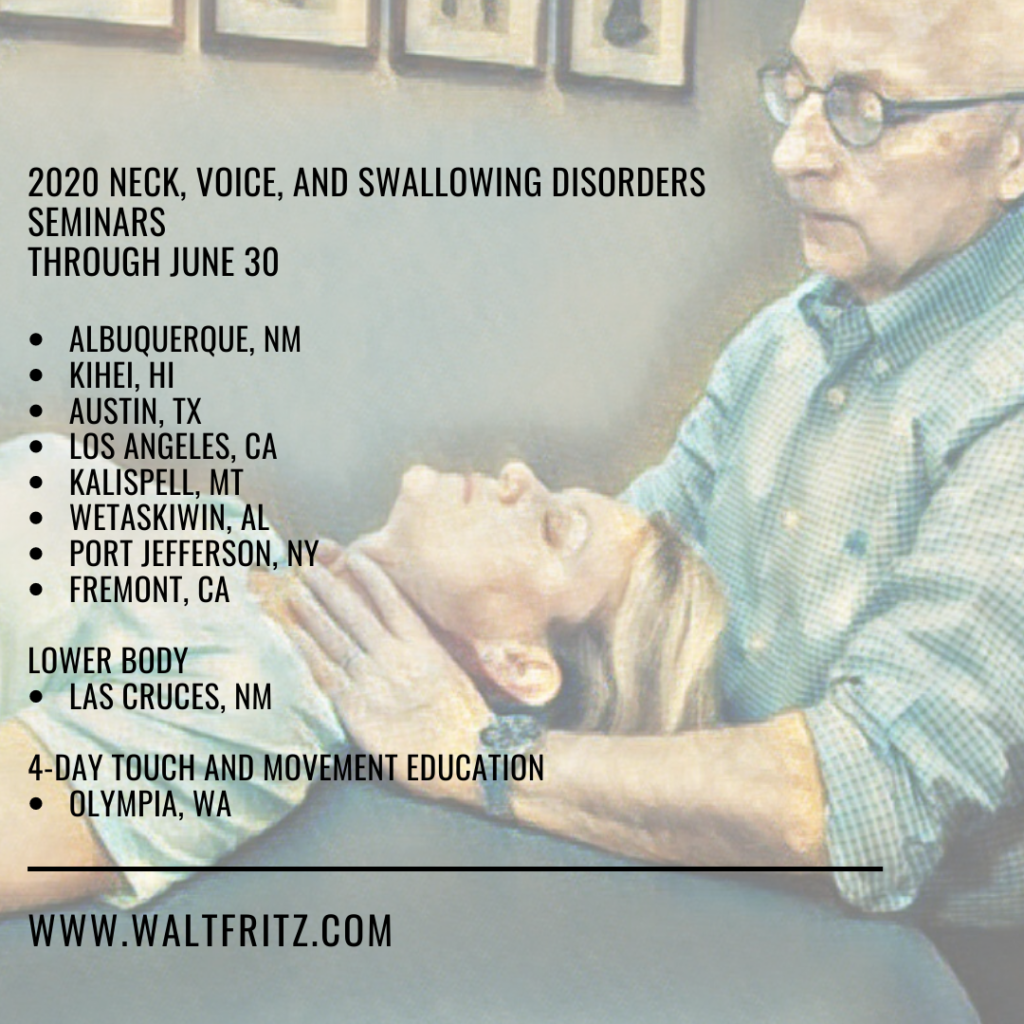
Manual therapy is rife with stories, and while some may show some truth, many are simply stories. They are often ones that we, the student, are sold. I bought into a lot of stories over the years though I doubt that I am unique in this endeavor.
I spent much of my early days as a physical therapist working in a center for developmentally and physically disabled children, aged birth to 5. This was in the mid to late 1980s, and I like to think of these days as the dark ages of evidence-based practice. While these memories might indeed be provable, my recollection may have more to do with my lack of critical-thinking skills and less to do with weak evidence available at the time. Evidence has always existed, though as science advances, looking back seems, at times, almost laughable. Pediatric physical therapy had some decent evidence to support the various means of intervention, though not universal.
I can distinctly remember attending an in-service around 1987, which was to teach us infant abdominal massage. The stated goals were to relieve constipation and make for a happier baby, one more responsive to our interventions. There was some background given on the route of the colon, and distinct rules were stated, to avoid “back-ups” and what-not. We were instructed to palpate the length of the colon, feeling for impacted stool and always told to massage starting at the distal end of the descending colon. We were to slowly work our way up the descending colon, across the transverse, and down the ascending colon, working under the assumption that if you reverse the order, then feces would be freed with nowhere to go. Plugged pipes allow no passage. I dutifully followed my instructions, fearing a back-up might cause, well, I’m not quite sure what it would have created, and none of us PTs and OTs dared to try it, to see what might happen. Visions of exploding babies were not pleasant thoughts. In some ways, I fancied myself as a bit of a poopbuster, freeing constipation wherever it may lie. I’m not sure if I was ever able to determine the results of my busting adequately, as even the most constipated typically cleared after a while. I did fancy myself rather adept at palpating those tight little colons on those tiny babies and prodded myself on the gentle touch that I used.
Time marched forward, and my interactions with the early intervention population dwindled. It was about that time I began learning the principles of MFR and CST. More stories. More seemingly positive effects. More stories being confirmed by those positive effects. Still little evidence.
Then, even more, time passed, so much so that I began to look back on all that I had learned and abandoned. I had learned a bit of visceral manipulation along the way, which was said to do things that my now-ancient poopbusting skills seemed to match, in terms of results. Mixed in were concepts of fascial restriction in the visceral cavity, responding to my selective touch for said restrictions. But as I drifted away from tissue-specific stories and into neurocentric models of explanation, I saw the limitations in the descriptions taught in each of those styles of training. Oddly enough, I was still doing similar work that I was taught, though little movement-based abdominal massage, and indeed not working about exploding abdominal cavities from working in the wrong direction.
What changed? Why did I move on from the story taught to me in abdominal massage training (or MFR, CST, visceral manipulation, and many other Alt-Med modalities)? I moved on mostly due to the rabbit hole explanations of each of those treatment systems. Rabbit hole systems are ones that cater to the needs of those interested in the modality and care little if others outside that rabbit hole believe what is taught. Think of our current US political system. Little out-of-the-rabbit-hole listening takes place; rather, it becomes a lot of shouting in echo chambers. While there may be certain aspects of every body of work, can the human species be so unique to be able to respond only to one style of touch, based on the beliefs of alone that modality? Or might there be more straightforward explanations for the impact of touch? As I learned more about what was being taught in all of the other rabbit holes, I saw that more straightforward answers might be true. Simpler does not necessarily mean easy to understand. Simpler often implies that the explanation doesn’t drift far into conjecture; instead they might use accepted science to explain effects. Made-up science now makes me bristle.
Over the past 30+ years, I’ve seen babies and adults respond positively to light, sustained touch to the abdominal region. I’ve never worked these results into any study, so possibly I am just patting myself on the shoulder for doing bang-up work, but my patients seem satisfied. Many in the scientific community rate published case studies as the lowest form of acceptable evidence. Case studies indeed lie above “it worked for me” as credible evidence. However, as I look back on the ritual of abdominal massage as I once practiced it and compare it to today, I see myself concentrating less on feeling like I am busting up that poop and more on providing an overall relaxation to their nervous system, somatic and autonomic. I do believe it entirely credible to see the positive outcomes as a more direct effect of such nervous system engagement and less so due to manual manipulation of the colon. Many will disagree, possibly those taught form one of those rabbit holes form my past. We all may someday be proven entirely wrong or right, though our explanations will seem crude at best. Providing input that allows for a reduction in sympathetic (fight or flight) tone may indeed allow for peristalsis to increase, as it is a very accepted fact that gut motility slows dramatically during the fight or flight response. Robert Scheip describes a reduction in sympathetic activity with stimulation of Ruffini receptors in the skin. (OK, he states that Ruffinis are fascial mechanoreceptors, but they are also prolific in the skin. Skin is the only aspect of anatomy that we can be certain that we are impacting with manual therapy…unless we have access to a scalpel!) A simple sustained stretch to a person’s skin may allow a reduction in sympathetic dominance/activity, which, in turn, increases parasympathetic state and an immediate increase in peristaltic action. Outcome? Potential pooping. Is this THE answer? The only possible answer? Nope, but it sure is plausible.
So am I busting poop when I lightly engage/stretch a patient’s abdomen? Probably not. Do I care which direction I work? Certainly not from the poop must have a path to escape model. The route that I care about now is the one that my patient voices as feeling most helpful. The direction that they think could give them comfort and the direction that does not inflict fear. I now care much more about what my patient believes and less about what those rather quaint, historical models taught.
Have any of you moved on from the original stories you were taught in your manual therapy training? Do you have a poopbuster story to share? I’ll bet that many of you do.
Who ya gonna call?
Cheers,
Walt Fritz, PT
Foundations in Myofascial Release Seminars
Copyright© 2019 Walt Fritz, PT
Please check out my seminar offerings at this link. I teach seminars across the globe to professionals of all types, including SLPs, Voice Professionals, and Massage/Physical/Occupational therapists. .
I am a proud member of the Medbridge Massage team of educators. I have 8 online courses, all presented from my updated, science-informed model of myofascial release. Take advantage of some pretty great discounts with a 12-month package of viewing, learning and CEUs with unlimited viewing of not only my (pretty great) courses but also over a dozen of the top educators in the massage profession. Approved for CEUs for all US MTs. Use the discount code FRITZmassage for the $49/year price by using this link: Medbridge Massage.

I can also offer some pretty great discounts to SLPs, PTs, and OTs through Medbridge Education. Click the image below here to have the discount applied.



I had the advantage that right out of school I was hired by a chiropractor that wanted his clients to receive interactive massage. His treatment was stimulus response so I worked at stimulus reduction response. Later a client brought me a book given to her by an osteopath who said that if her husband did the positioning she would get well. The book was JONES STRAIN-COUNTERSTRAIN by Lawrence H Jones, DO. Now I had a neurological explanation for what I was doing with much success.
My story now is after 25 years; You bring me a digital device complaining that it runs slow, jerky and some times freezes up. I check and find that you have started program after program with out shutting any of them down. The solution is to carefully shut each program down making sure it will not start again automatically unless necessary then reboot the computer.
Likewise during your life course you have started up protective programs in your nervous system to protect against some perceived threat. Many of them have persisted long after they were needed. Some of them conflict with others and it there are enough of them they overwhelm the Central Processor.
You need to communicate with me what you feel with each position or stretch until we find what shuts the program off and then hold that until your central nervous system determines whether it can safly be deleted.
I love the metaphors that each of us chooses to get across these concepts. All of us are saying quite similar things, but coded within the vernacular of our own experience. Fascinating!